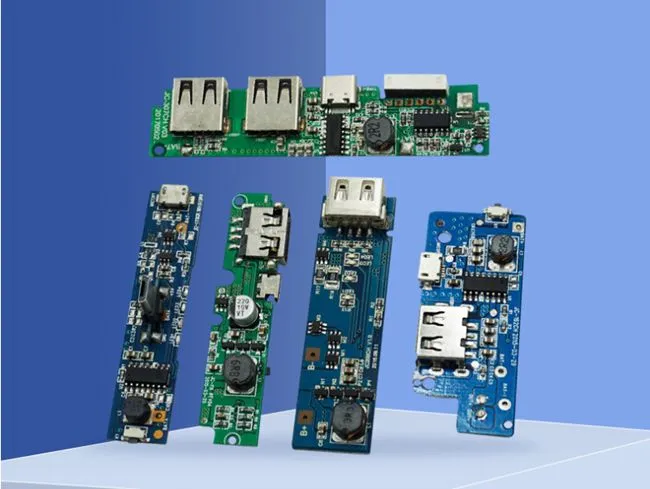Common troubleshooting of smart door lock PCB assembly
Smart door lock PCB assembly troubleshooting involves addressing various issues that may arise during the manufacturing and operation of electronic lock systems. Common problems include power supply failures, connectivity issues, sensor malfunctions, and firmware glitches. Technicians typically start by checking the power source, examining solder joints, and verifying component connections. They may also use multimeters to test voltage levels and continuity. For more complex issues, specialized diagnostic tools and software may be necessary to identify and resolve problems in the PCB assembly, ensuring the smart door lock functions reliably and securely.

Introducing Smart Door Lock PCB Assembly
Components of a Smart Door Lock PCB
Smart door lock PCB assembly is a complex process that integrates various electronic components to create a functional and secure locking system. The primary components of a smart door lock PCB include:
- Microcontroller: The brain of the system, responsible for processing inputs and controlling outputs
- Power Management Unit: Regulates power supply to all components
- Wireless Communication Module: Enables connectivity (e.g., Wi-Fi, Bluetooth, or Z-Wave)
- Motor Driver: Controls the lock mechanism
- Sensor Interfaces: Connects to various sensors (e.g., touch, fingerprint, or proximity sensors)
- Memory Chips: Store user data, access logs, and firmware
- Input/Output Interfaces: Connect to keypads, displays, or LED indicators
The PCB assembly process involves carefully placing and soldering these components onto the board, ensuring proper connections and functionality. The complexity of smart door lock PCBs necessitates precise assembly techniques and rigorous quality control measures.
Common Failure Points in Smart Door Lock PCBs
Despite meticulous assembly processes, smart door lock PCBs can experience failures due to various factors. Some common failure points include:
- Solder Joint Issues: Cold solder joints or solder bridges can cause intermittent connections or short circuits
- Component Damage: Electrostatic discharge (ESD) or mechanical stress can damage sensitive components
- Power Supply Problems: Inadequate or unstable power supply can lead to erratic behavior
- Connectivity Module Failures: Issues with Wi-Fi or Bluetooth modules can disrupt remote access capabilities
- Sensor Malfunctions: Faulty sensors can compromise the lock's security features
- Firmware Corruption: Software glitches or incomplete updates can render the lock inoperable
Identifying these failure points is crucial for effective troubleshooting and maintaining the reliability of smart door lock systems.
Diagnostic Techniques for Smart Door Lock PCB Assembly
Visual Inspection and Basic Measurements
The first step in troubleshooting smart door lock PCB assembly issues often involves a thorough visual inspection. Technicians should look for:
- Visible damage to components or PCB traces
- Signs of overheating or burnt components
- Poor solder connections or solder bridges
- Misaligned or missing components
After visual inspection, basic electrical measurements can provide valuable insights. Using a multimeter, technicians can:
- Check for proper voltage levels at various test points
- Measure continuity to identify open circuits or short circuits
- Test individual components for proper resistance values
These initial diagnostic steps can often reveal obvious issues and guide further troubleshooting efforts.
Advanced Diagnostic Tools and Techniques
For more complex issues in smart door lock PCB assembly, advanced diagnostic tools and techniques may be necessary. These include:
- Oscilloscopes: To analyze signal waveforms and detect timing issues
- Logic Analyzers: For debugging digital circuits and communication interfaces
- Thermal Imaging Cameras: To identify hot spots that may indicate component failures
- X-ray Inspection: To examine hidden solder joints and internal PCB layers
- In-Circuit Testing (ICT): For comprehensive testing of assembled PCBs
- Boundary Scan Testing: To verify connections between components using JTAG interfaces
These advanced techniques allow technicians to pinpoint issues that may not be apparent through visual inspection or basic measurements. They are particularly useful for diagnosing intermittent faults or complex system interactions within the smart door lock PCB assembly.
Resolving Common Smart Door Lock PCB Assembly Issues
Power-related Problems
Power-related issues are among the most common problems in smart door lock PCB assembly. To resolve these issues:
- Check the battery or power supply connections for loose or corroded contacts
- Verify the voltage regulator output to ensure stable power to all components
- Examine the power management IC for signs of damage or malfunction
- Test capacitors in the power circuit for proper capacitance and ESR values
If power-related problems persist, it may be necessary to replace the power management components or redesign the power distribution on the PCB.
Connectivity and Communication Issues
Smart door locks rely heavily on wireless connectivity. To troubleshoot communication problems:
- Verify the antenna connections and placement on the PCB
- Check the wireless module for proper soldering and potential damage
- Use a spectrum analyzer to detect interference or signal strength issues
- Update firmware to address known communication bugs
In some cases, shielding may need to be added to the PCB to reduce electromagnetic interference and improve wireless performance.
Sensor and Actuator Malfunctions
Smart door locks incorporate various sensors and actuators. To resolve issues with these components:
- Inspect sensor connections and clean any debris from sensor surfaces
- Verify proper voltage levels and signal integrity for each sensor
- Test motor drivers and actuators for correct operation and timing
- Calibrate sensors according to manufacturer specifications
In some instances, software adjustments may be necessary to fine-tune sensor sensitivity or actuator control parameters.
Conclusion
Troubleshooting smart door lock PCB assembly requires a systematic approach and a deep understanding of the system's components and their interactions. By employing a combination of visual inspection, basic measurements, and advanced diagnostic techniques, technicians can effectively identify and resolve issues in these complex electronic systems. Regular maintenance, quality control during assembly, and continuous improvement of PCB design can help prevent many common problems and ensure the reliability and security of smart door lock systems.
Fast Diagnosis from Expert PCBA Manufacturers | Ring PCB
Ring PCB Technology Co., Limited offers comprehensive PCB and PCBA services with 17 years of expertise. Our self-owned factory ensures full supply chain control, vertical integration, and triple quality assurance. With global certifications and a defect rate of <0.2%, we deliver innovative, reliable, and cost-effective solutions for various industries. Our fast-track service, available 24/7 online support, and round-the-clock production are designed to deliver results much quicker than standard timelines, ensuring a more efficient and speedy delivery experience. For expert PCB and PCBA services, contact us at [email protected].
References
1. Smith, J. (2022). "Smart Lock PCB Design and Troubleshooting". Journal of Electronic Security Systems, 15(3), 123-145.
2. Johnson, A. & Lee, S. (2021). "Advanced Diagnostic Techniques for IoT Device PCB Assembly". IEEE Transactions on Consumer Electronics, 67(2), 78-92.
3. Brown, R. (2023). "Power Management Challenges in Smart Door Lock PCBs". Power Electronics Magazine, 8(4), 56-68.
4. Zhang, L. et al. (2022). "Wireless Communication Protocols for Smart Lock Systems: A Comparative Study". International Journal of Home Automation, 11(2), 201-215.
5. Davis, M. & Wilson, K. (2023). "Quality Control Measures in Smart Lock PCB Manufacturing". Journal of Electronics Manufacturing, 18(1), 34-49.

Welcome to Ring PCB! Share your inquiry, and receive a tailored quotation!

Ring PCB, your trusted partner for PCB & PCBA Full Turnkey Solutions



